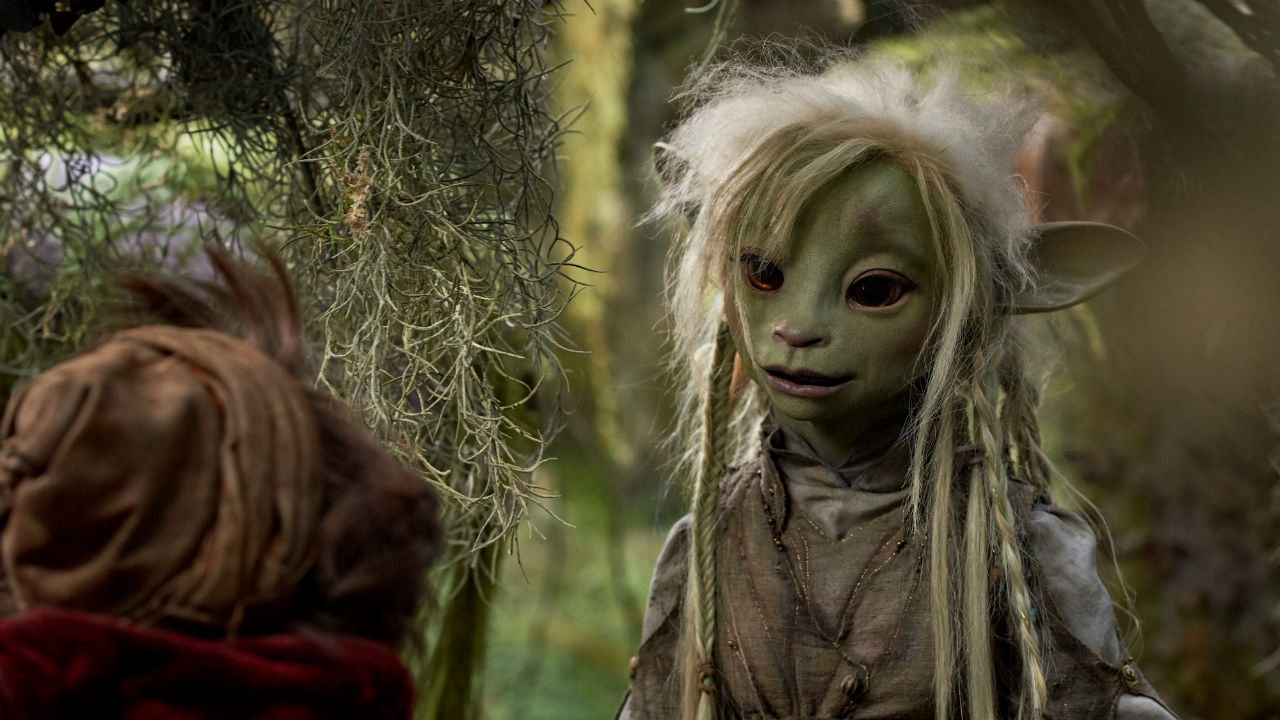"We finally made a character Jim Henson wanted in the first film" – Dark Crystal artist Brian Froud talks Age of Resistance's evolution
SFX sat down with Brian Froud after a special screening of Dark Crystal

Of the many, many puppets and practical effects dotted throughout Netflix’s Dark Crystal: Age of Resistance, it’s perhaps hardest to wrap your head around just how they made Lore. A lumbering, creaking being made entirely of rocks, the creature is a by-product of the advances in puppeteering technology, which helped bring one of Jim Henson’s belated wishes to life – as designer and concept artist Brian Froud revealed during a recent Q&A.
“It’s wonderful to see [Lore] as a character, to see it move, and emote,” Froud says aftera screening of the original Dark Crystal at the BFI, organised by our sister publication SFX. “Years ago, Jim Henson came to see me in Dartmoor… and he fell in love with the landscape. He said, ‘I want this feeling of this landscape in [the original Dark Crystal]. “
Froud admits they only achieved that goal partly back in the 1982 movie: “We got some of that in the film. It’s a bit drier in the film than where I am!” However, he could now do the area justice in Age of Resistance, revealing: “There are these big mounds of rocks and Lore is based on that. So, we finally made a character that Jim Henson wanted in the first film.”
The designer, who has a long, rich history with the Dark Crystal (including his son, Toby, working on special effects for Age of Resistance), also explains how leaps in special effects – as well as a look towards the ancient past – helped bring Lore to life.
“Most of my designs were originally how we hid things… we didn’t have to do that anymore. We didn’t have green screen, and now we do. It meant we could puppeteer from the outside,” Froud says of the ability to use technology to remove puppeteers digitally in the finished product despite being on camera.
“We’ve gone back to an old technique, which is Bunraku, a Japanese way of puppeteering where you see the puppeteers,” Froud explains. “What it does is actually engages the puppeteer directly to the puppet, and so we get much more dynamic movement and the creature is much more expressive.”
For more from SFX’s Q&A with Brian Froud, be sure to watch the video below.
Bringing all the latest movie news, features, and reviews to your inbox
If you're a fan of SFX, you can subscribe so that you never miss an issue. We’re currently running an offer where you can get five issues for £5! Or subscribe from as little as £10.25 every three months. Head to My Favourite Magazines now to take advantage of the offer. (Ts and Cs apply).
I'm the Senior Entertainment Writer here at GamesRadar+, focusing on news, features, and interviews with some of the biggest names in film and TV. On-site, you'll find me marveling at Marvel and providing analysis and room temperature takes on the newest films, Star Wars and, of course, anime. Outside of GR, I love getting lost in a good 100-hour JRPG, Warzone, and kicking back on the (virtual) field with Football Manager. My work has also been featured in OPM, FourFourTwo, and Game Revolution.



